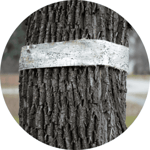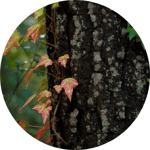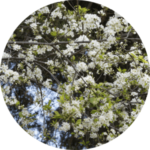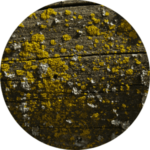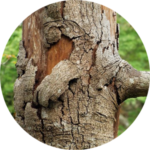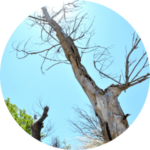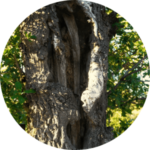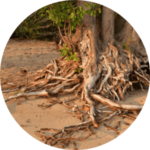10 Signs Your Trees Could Be Unhealthy
Trees are beautiful things. They give us shade in the summer, shelter in the winter, and oxygenate the air around them. People naturally love to be around trees. But sometimes they can become a hazard.
When Large Trees Become Dangerous
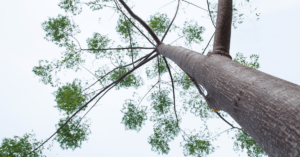
Here in Delaware, we have an unusually high water table and some of the lowest-lying topsoil in the hemisphere. This makes it possible for our state to have the many beautiful estuaries we all love, but it also means that our trees have an unusually thin margin of vital soil to hang on to. If you have surveyed many of our natural woodland areas, you'll have noticed that many of our wild trees are thin and only moderately tall. This is a natural adaptation to the thin topsoil.
Understandably, people tend to plant, grow, and promote the growth of larger trees around their homes. But in a location like this one, it's important to understand the hazards of having larger, heavier trees near our homes, especially during storm season. Large trees can be weakened due to insufficient soil support. This happens not only because there is too little soil for the tree to grasp on to, but also because they cannot get enough nutrients to grow strong and firm. Some species of tree will grow large and strong, but then become weak because of these conditions. Here in the First State, we recently had some violent wind storms that took down a lot of heavy foliage near businesses and homes.
The good news is that the signs of a dangerously weakened tree can be spotted if you know what to look for. With a combination of proper tree care and tree removal services, you can keep and care for your large trees knowing that you will be safe from an unexpected arboreal collapse.
Here at First Class Lawn Care in Wilmington, DE, our team was asked to put together their best expertise in spotting and preventing dangerous large tree conditions that could be threatening to your home or business and the people who spend time around them. Below are ten signs, your large trees are in danger of collapse or could be in the near future.
Signs You May Need Emergency Tree Removal Service
The following warning signs are clear indicators of a tree that could be becoming dangerously unstable. In many cases, a tree with any of the following conditions could be saved. But in other cases, such a tree must be removed or trimmed to preserve the tree and to promote safety.
1. Insect Infestations
Most insects will not attack a tree until the wood has become weak. Insects prefer an easy meal, like most creatures, and hard, strong wood is more difficult for them to burrow into and eat.
2. Color Changes in the Trunk
Most trees should have a fairly uniform coloration and texture pattern on the limbs and trunk. Irregularities in surface color, shape, or density could be a sign that the wood is becoming sick and compromised.
3. Wilting Leaves
Leaves that wilt unseasonably can also be a sign that your tree is suffering. Be especially careful if you notice leaves wilting unseasonably on one branch or side of the tree.
4. Dead Limbs
Dead limbs are always dangerous and should be removed as soon as possible. But especially large limbs that have died are a sign of disease or distress in a lower, more foundational part of the tree.
5. Lack of Growth in Stems, Buds, and Flowers
In the spring, flowers and buds should appear readily and predictably. If you notice a lack of flowers and buds, it could be a sign that your tree is in-ill health.
6. Fungus Growths
Like bugs, mold and fungus have a hard time attacking healthy wood. If you see significant fungal growth or mold blooms, your tree may be in trouble.
7. Cracking Wood
Cracking wood is one of the surest signs that a tree has fallen on hard times, or is about to. Visible cracks in the wood are especially dangerous and most often occur at the primary support point for a heavy limb.
8. Lack of Leaves During the Warmer Months
Like blooms and flowers, leaves should start appearing as soon as winter conditions begin to recede. Trees need their leaves to be developed and functioning in order to live. So a lack of leaves, especially on one part of the tree, is a sign of weakness or disease.
9. Forming Cankers
Like sores in a person's mouth, a visible canker on a tree is a sign of distress. These indented, open sores form in the bark after a tree has developed a disease condition.
10. Uprooting
When the root system has begun to die, or if the soil is overly eroded, the tree may start to lean. This is a clear sign that the tree is too weak to stand up to heavy wind and should be removed.
Tree Service in Wilmington Delaware
Removing a dangerous tree is far less costly than replacing a structure that has been damaged by a fallen tree and vastly preferable to the bodily harm a falling tree can cause. If your trees need to be removed, or if you need storm debris removal services, get in touch with the tree care and safety experts at First Class Lawn Care in Wilmington, DE today.

